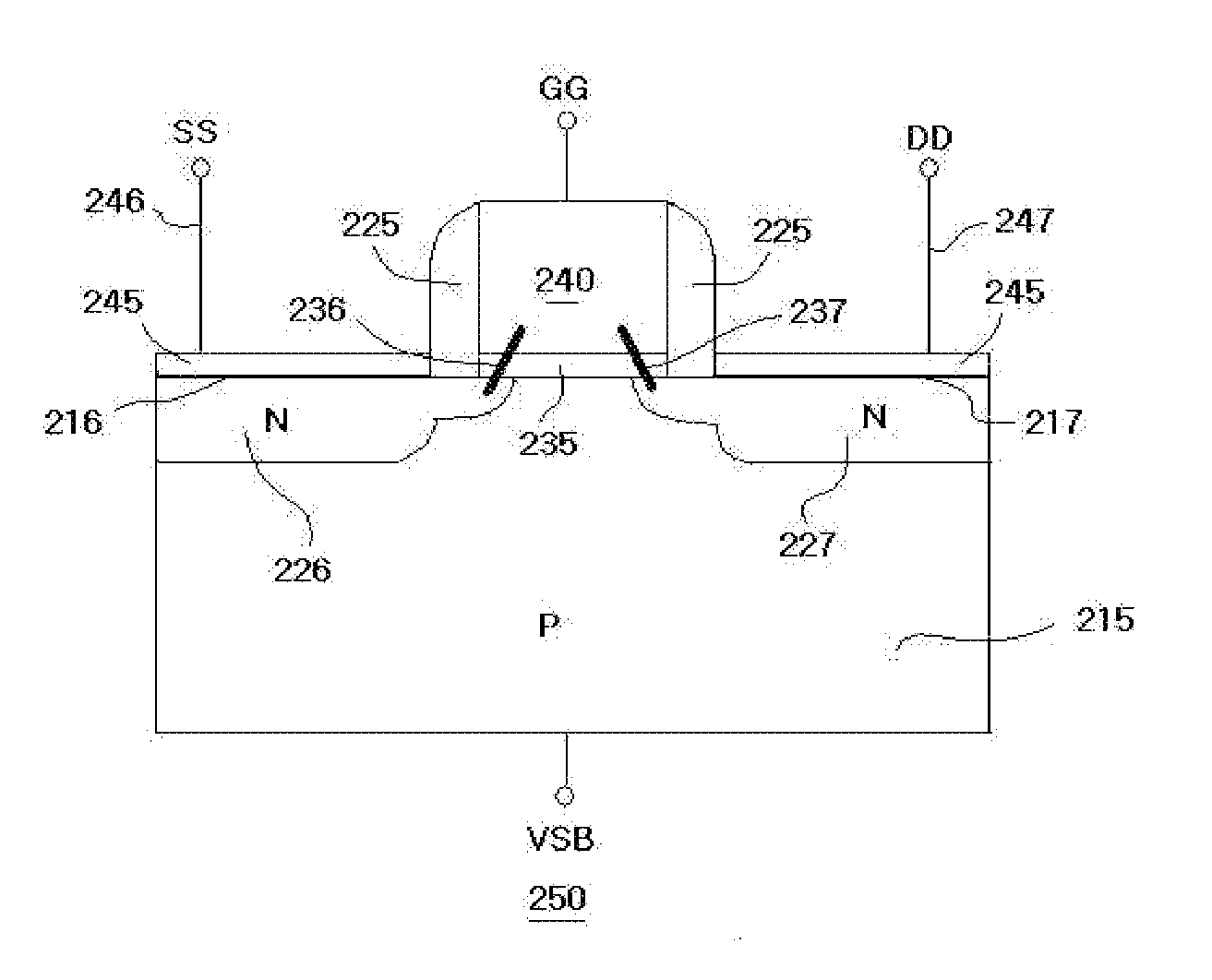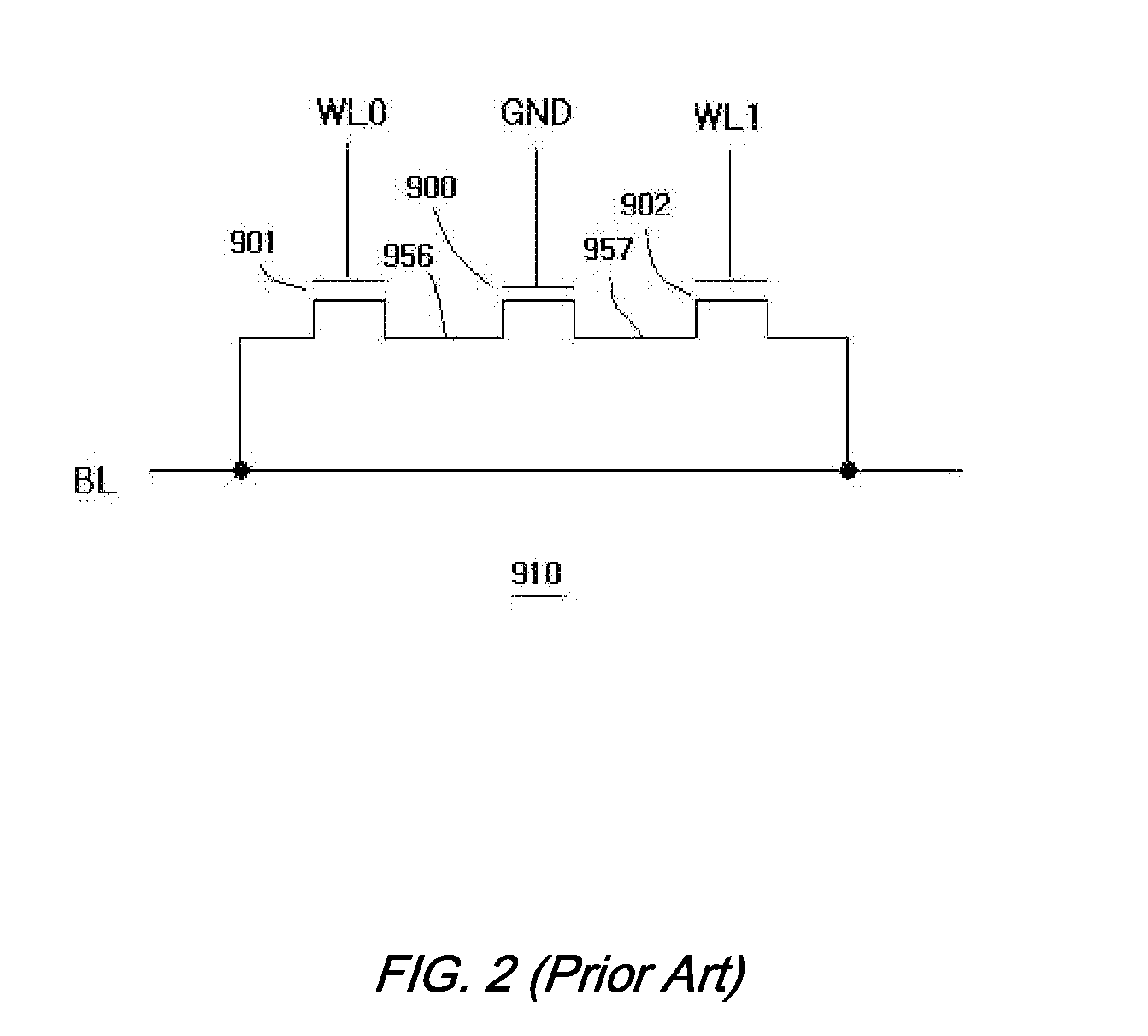Programmable non-volatile memory
a non-volatile memory and programmable technology, applied in solid-state devices, diodes, instruments, etc., can solve the problems of the need of access transistors, the fundamental limitation of increasing the integration density, and the need of thick oxide layer mos transistors, so as to increase the integration density and facilitate the fabrication process. , the effect of improving the integration density
- Summary
- Abstract
- Description
- Claims
- Application Information
AI Technical Summary
Benefits of technology
Problems solved by technology
Method used
Image
Examples
Embodiment Construction
[0056]An aspect or aspects of present invention will now be described more fully with reference to the accompanying drawings, in which exemplary embodiments of the invention are shown.
[0057]The embodiments of the present invention are provided to fully describe the present inventive concept to those of ordinary skill in the art, may be embodied in many different forms, and should not be construed as being limited to the embodiments set forth herein; rather, these embodiments are provided so that this disclosure will be thorough and complete, and will fully convey the concept of the present inventive concept.
[0058]The terminology used in the application is used only to describe specific embodiments and does not have any intention to limit the inventive concept. An expression in the singular includes an expression in the plural unless they are clearly different from each other in a context. In the application, it should be understood that terms, such as “comprise” and / or “comprising”,...
PUM
 Login to View More
Login to View More Abstract
Description
Claims
Application Information
 Login to View More
Login to View More - R&D
- Intellectual Property
- Life Sciences
- Materials
- Tech Scout
- Unparalleled Data Quality
- Higher Quality Content
- 60% Fewer Hallucinations
Browse by: Latest US Patents, China's latest patents, Technical Efficacy Thesaurus, Application Domain, Technology Topic, Popular Technical Reports.
© 2025 PatSnap. All rights reserved.Legal|Privacy policy|Modern Slavery Act Transparency Statement|Sitemap|About US| Contact US: help@patsnap.com



